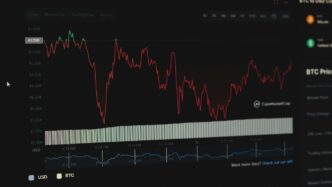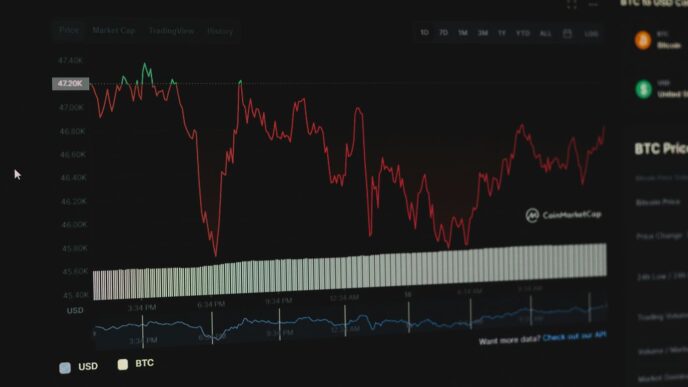The world of SaaS is always changing, but it’s not often we get a clear picture based on real numbers. This article looks at data from over 2,400 private B2B SaaS companies to show what’s truly helping them grow right now. While many might chase the newest trends, the data tells a more detailed story that challenges some common ideas. We’ll explore what’s actually working for the fastest growing saas companies.
Key Takeaways
- Growth is bouncing back, but it’s different this time, especially for smaller companies.
- The most successful companies are in essential sectors like cybersecurity and infrastructure, not always the flashiest ones.
- AI is changing how SaaS companies make money, making things more efficient and sticky for customers.
- Focusing on a specific niche (Vertical SaaS) helps companies grow faster and keep customers longer.
- The best companies show clear value right away and solve hidden problems for their users.
The Resilient Growth of Fastest Growing SaaS Companies

Navigating Challenging Market Conditions
The SaaS world has been a rollercoaster, no doubt. It feels like just yesterday everyone was talking about explosive growth, and now it’s all about being smart and efficient. The current environment has really separated the strong from the weak. Companies that can adapt and still grow are the ones we’re watching closely. It’s a "survival of the fittest" situation, and honestly, it’s kind of exciting to see who comes out on top. The database companies are really showing their resilience.
Key Growth Metrics and Sector Performance
Let’s talk numbers. The average growth rate across B2B SaaS is around 17%. That’s a solid recovery from the dip we saw in early 2023. What’s interesting is where that growth is coming from. Smaller companies are accelerating faster than expected, and certain sectors are just crushing it. Think logistics, cybersecurity, and infrastructure – the stuff businesses need, not just want. Here’s a quick look:
- Average B2B SaaS Growth: 17%
- Growth in Logistics & Transportation: 24%
- Growth in Cybersecurity: 21%
- Growth in Infrastructure & DevOps: 20%
The Survival of the Fittest Mentality
To make it in this market, you have to be lean, mean, and ready to adapt. It’s not enough to just have a great product; you need a solid business model, efficient operations, and a relentless focus on customer value. Companies are really focusing on:
- Capital efficiency from day one.
- Sustainable unit economics, not just vanity metrics.
- Contingency plans for different funding scenarios.
- Investing in customer success to keep customers happy and spending more.
Growth Recovery: A New Paradigm for Fastest Growing SaaS Companies
The SaaS world is seeing a real shift. After a tough 2023, things are starting to look up, but it’s not just a return to the old ways. We’re seeing a new normal where adaptability and efficiency are key. The old strategies aren’t cutting it anymore; companies need to rethink how they approach growth.
Rebounding from the 2023 Slowdown
2023 was a rough year for SaaS. Growth rates took a nosedive, causing concern across the industry. However, the sector has shown resilience, bouncing back to an average growth rate of 17%. This recovery highlights the underlying strength of the SaaS model, but it also reveals a changed landscape. This B2B SaaS growth is a welcome sign, but it’s important to understand that the path forward is different now.
Surprising Acceleration in Smaller Companies
One of the most interesting trends is the acceleration of growth in smaller companies, those with less than $1 million in ARR. These companies are showing impressive growth rates, often outpacing their larger counterparts. This suggests that smaller, more nimble companies are better positioned to adapt to the changing market conditions. They’re able to find niches and capitalize on opportunities that larger companies might miss. This acceleration is a testament to their agility and focus.
Building for Sustainable Growth
To thrive in this new environment, SaaS companies need to focus on sustainable growth. This means prioritizing capital efficiency, unit economics, and customer retention. It’s no longer enough to chase vanity metrics or rely on endless funding rounds. Companies need to build solid foundations and focus on creating real value for their customers. Here are some key strategies:
- Building with capital efficiency from the start.
- Focusing on sustainable unit economics rather than just growth numbers.
- Investing in customer success to improve retention.
These companies demonstrate that building a sustainable business with strong unit economics can be a viable alternative to the VC-backed hypergrowth model. As Jason Lemkin of SaaStr points out, "The best SaaS companies today have optionality—they can choose to take funding when it accelerates their roadmap, not because they need it to survive."
Essential Sectors Driving Fastest Growing SaaS Companies
Identifying High-Growth SaaS Niches
Finding the right niche is like discovering a gold mine. It’s not always about the flashiest tech; sometimes, it’s about solving very specific problems for a dedicated group of users. Think about it: a vertical SaaS approach lets you really dig deep and become an expert in one area. That expertise? It translates to customer loyalty and faster growth. It’s about being the go-to solution, not just another option.
The Rise of Infrastructure and Cybersecurity
While everyone’s been hyping AI, some of the most solid growth is happening in the less flashy, but totally vital, areas of infrastructure and cybersecurity. These sectors are seeing impressive growth because they address fundamental needs. Companies need reliable systems and protection from ever-increasing threats. It’s not a ‘nice-to-have’ anymore; it’s a ‘must-have’.
- Cybersecurity: average growth of 21%
- Infrastructure & DevOps: average growth of 20%
Outperforming AI in Growth Rates
It might surprise some, but sectors like logistics and supply chain management are actually outpacing AI in terms of growth. This isn’t to say AI isn’t important, but it highlights that practical, essential services are still in high demand. Companies are focusing on streamlining operations and improving efficiency, and that’s where these sectors shine. The fastest growing SaaS companies are the ones that solve real, tangible problems, and right now, that often means focusing on the basics.
- Logistics & Transportation: 24% average growth
- Supply Chain Management: 22% average growth
Strategic Shifts for Fastest Growing SaaS Companies
AI and Machine Learning Redrawing Economics
AI and machine learning are no longer just buzzwords; they’re fundamentally changing how SaaS companies operate and grow. Gartner predicts that a huge percentage of SaaS platforms will use AI in the next few years. This isn’t just about adding fancy features; it’s about creating real, measurable value for customers. Think about it: AI can automate tasks, provide insights, and personalize experiences in ways that were never before possible. This translates to instant ROI for customers, making your SaaS product a must-have rather than a nice-to-have. Plus, AI features get smarter over time, leading to better retention and a competitive edge. SaaS trends are rapidly evolving.
Vertical SaaS: Niche as the New Mass Market
Generic SaaS is old news. The real growth is happening in vertical SaaS, where companies are laser-focused on specific industries. Instead of trying to be everything to everyone, these companies are building solutions tailored to the unique needs of a particular market. This allows them to offer deeper functionality, better support, and a more compelling value proposition. Think of it this way: a construction company isn’t going to use the same project management software as a marketing agency. Vertical SaaS recognizes this and provides solutions that fit like a glove.
The Role of No-Code and Low-Code Solutions
No-code and low-code platforms are democratizing software development. They’re empowering non-technical users to build and customize applications without writing a single line of code. This has huge implications for SaaS companies. It means they can:
- Accelerate development cycles: Build and iterate faster than ever before.
- Reduce development costs: Less reliance on expensive developers.
- Empower citizen developers: Enable users to create their own solutions.
- Improve customer satisfaction: Offer more customization and flexibility.
No-code and low-code aren’t just a trend; they’re a fundamental shift in how software is created and consumed. SaaS companies that embrace these solutions will be well-positioned to thrive in the years to come.
Lessons from Top Fastest Growing SaaS Companies
Developer-First Mindset and Seamless Integration
It’s clear that the fastest-growing SaaS companies understand the importance of a developer-first approach. This means building products that are easy for developers to integrate into existing systems and workflows. Think about it: developers are often the gatekeepers to adopting new software within an organization. If your product doesn’t play nice with their tools, you’re going to have a hard time getting traction. Seamless integration is key. No one wants to spend hours wrestling with APIs or dealing with compatibility issues. Make it easy, and developers will love you for it.
Solving Hidden Productivity Leaks
Many SaaS solutions focus on obvious productivity gains, but the real winners are those that identify and address hidden productivity leaks. These are the small inefficiencies that add up over time and drain resources. For example:
- Automating repetitive tasks.
- Streamlining communication workflows.
- Providing better data insights to reduce decision-making time.
By targeting these less obvious pain points, SaaS companies can achieve B2B SaaS growth and demonstrate significant value to their customers. It’s about making every employee more efficient, not just a few.
Quantifying Value and Tangible ROI
In today’s market, it’s not enough to simply offer a good product. You need to be able to quantify the value you provide and demonstrate a tangible return on investment (ROI). This means tracking key metrics and presenting them in a way that’s easy for customers to understand. Consider these points:
- Clearly define the problem your product solves.
- Establish baseline metrics before implementation.
- Track progress and report on key performance indicators (KPIs).
By focusing on ROI, you can build trust with your customers and justify the cost of your SaaS solution. If you can’t show them the money, they won’t stick around.
Case Studies of Fastest Growing SaaS Companies
Deel: Global Payroll and Compliance
Deel really took off by tackling a big headache: making global payroll and compliance simple. They jumped into the market at just the right time, as remote work was exploding. They provide a digital platforms market that helps companies hire and pay employees all over the world, while staying on the right side of the law. They hit $100M ARR super fast, and they’ve kept growing like crazy ever since. It’s a great example of finding a real problem and solving it well.
Causal: Disrupting Financial Modeling
Causal is changing how companies do financial modeling. Instead of clunky spreadsheets, they offer a more intuitive, collaborative platform. They’ve grown fast by focusing on a specific need and doing it really well. They reached $5M ARR with a small team, showing how efficient they are. They’re a good example of how a focused approach can pay off, even when times are tough. It’s all about B2B SaaS growth.
Synthesia: AI Video Generation Innovation
Synthesia is doing some cool stuff with AI, making it easy for anyone to create professional-looking videos. They’ve grown a lot by solving a real problem for businesses: creating video content without needing expensive equipment or a film crew. They’re a good example of how AI can be used to make things easier and more accessible. They’ve seen massive growth, showing that there’s a big demand for AI video generation tools.
Future Outlook for Fastest Growing SaaS Companies
Adapting to Evolving Market Dynamics
The SaaS world never stands still. To stay ahead, the fastest growing SaaS companies need to be like water, adapting to every shift in the market. This means keeping a close eye on economic trends, technological advancements, and changes in customer behavior. Companies that can quickly adjust their strategies and business models will be the ones that continue to thrive. It’s not enough to just be good; you have to be ready to change.
The Importance of Data-Driven Strategies
Gut feelings can only get you so far. The future belongs to SaaS companies that make decisions based on solid data. This includes:
- Analyzing user behavior to improve product features.
- Using metrics to optimize marketing campaigns.
- Tracking key performance indicators (KPIs) to identify areas for improvement.
Data-driven insights help companies understand what’s working and what’s not, allowing them to make informed decisions and allocate resources effectively. It’s about using data to tell a story and guide your next move. The rise of SaaS-Based Business Intelligence is a testament to this.
Continuous Innovation and Customer Focus
Standing still is the same as moving backwards. The fastest growing SaaS companies understand that innovation is not a one-time event, but a continuous process. This means:
- Investing in research and development to create new features and products.
- Soliciting feedback from customers to understand their needs and pain points.
- Experimenting with new technologies and approaches to stay ahead of the curve.
Ultimately, it’s about putting the customer first and constantly striving to improve their experience. Companies that can deliver exceptional value and build strong relationships with their customers will be well-positioned for long-term success.
Conclusion: What This All Means for You
So, what’s the big takeaway from all this? Well, the SaaS world in 2025 is definitely not boring. We’ve seen how companies are growing, even with things being a bit tough out there. It’s clear that the ones doing really well are the ones that figure out what people truly need and then build something solid. They aren’t just chasing fads. They’re making products that stick around because they help businesses in real ways. If you’re in the SaaS game, or thinking about getting into it, remember that focusing on actual problems and building something dependable is always a good idea. That’s how you make something that lasts.
Frequently Asked Questions
How is the SaaS market doing right now?
The SaaS market is bouncing back strong, with an average growth rate of 17% across B2B companies. This is a big improvement from the 14% growth seen in early 2023. Smaller companies, especially those making less than $1 million a year, are growing surprisingly fast.
Which types of SaaS companies are growing the quickest?
Some of the fastest-growing areas are those that provide essential services. Think logistics, cybersecurity, and basic infrastructure software. These are often called ‘must-have’ tools because businesses need them to run smoothly, unlike ‘nice-to-have’ tools that might get cut when times are tough.
How are new technologies like AI affecting SaaS growth?
AI is definitely changing things, making many tasks easier and faster, which helps companies save money. This means AI-powered tools can offer a clear return on investment. Also, ‘vertical SaaS’ is huge, where companies focus on very specific industries instead of trying to serve everyone. This helps them build tools that perfectly fit a niche market’s needs.
What are some common traits of top-performing SaaS companies?
Many successful SaaS companies focus on making their products super easy for developers to use and connect with other tools. They also try to solve problems that most people don’t even realize they have, like wasted time searching for information. And they make sure customers can clearly see how much value they’re getting from the product, like money saved or time gained.
Can you give examples of successful SaaS companies and why they’re growing?
Companies like Deel (for global payroll), Causal (for financial planning), and Synthesia (for AI video creation) are great examples. They all found a specific problem to solve and built a powerful solution that became essential for their users, leading to rapid growth even in tough times.
What should SaaS companies do to keep growing in the future?
The future looks bright for SaaS, but companies will need to keep changing with the market. Using data to make smart decisions and constantly coming up with new and better ideas will be key. Focusing on what customers truly need and providing amazing service will also be super important.














